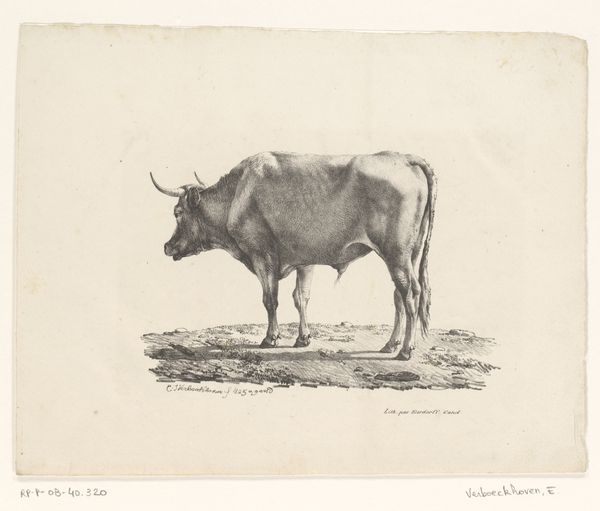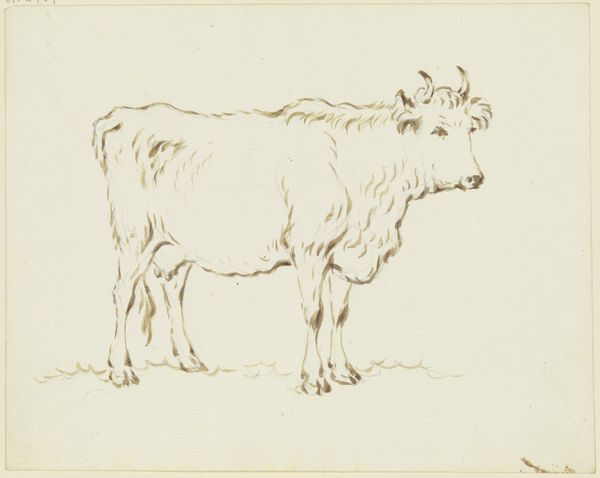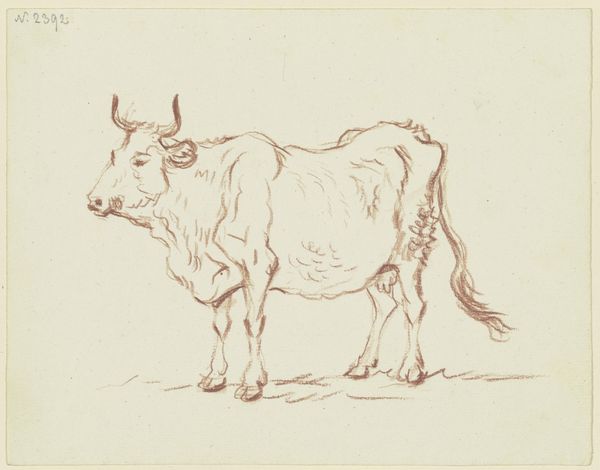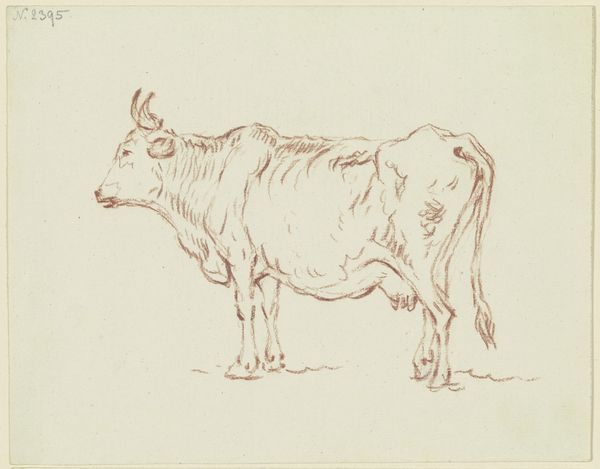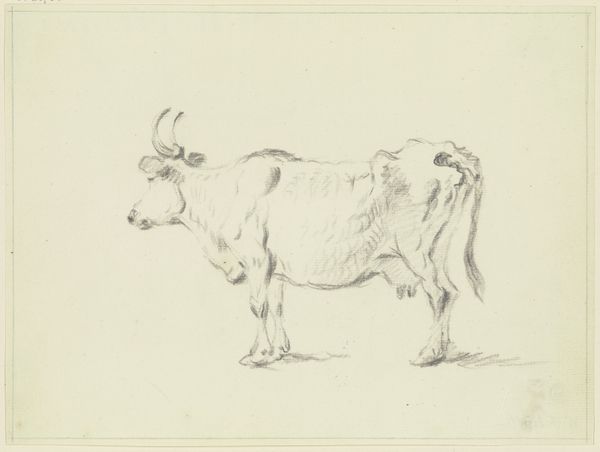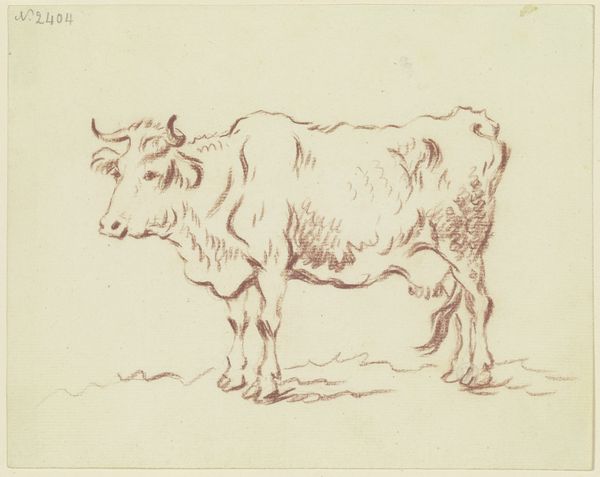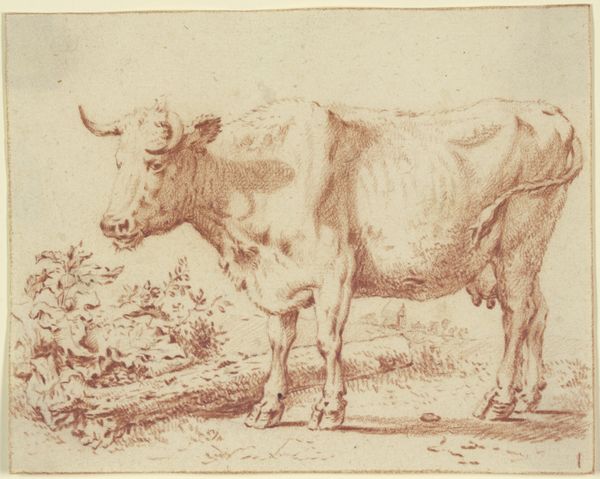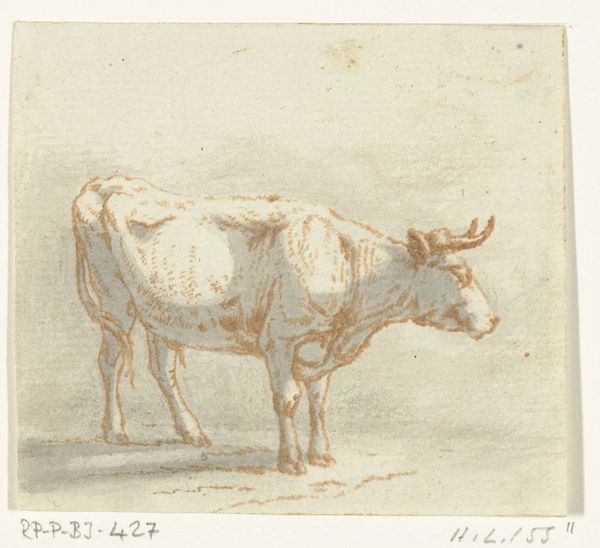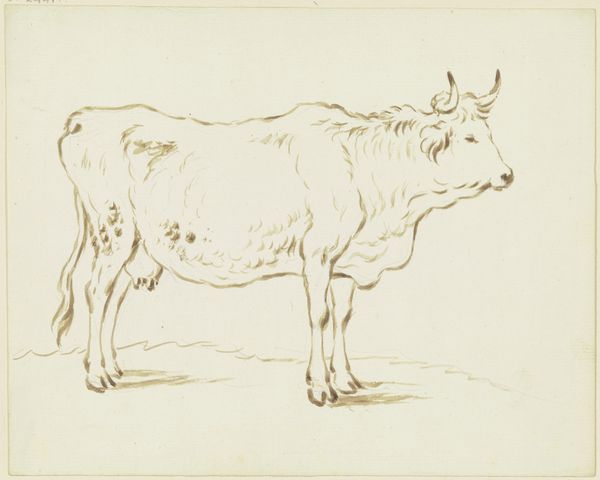
drawing, ink
#
drawing
#
animal
#
landscape
#
etching
#
ink
#
sketchbook drawing
#
realism
Dimensions: height 95 mm, width 105 mm
Copyright: Rijks Museum: Open Domain
Curator: Isn’t that lovely? The delicate lines, the subtle shading…it almost feels like peering into a pastoral dream. Editor: I see a certain stillness, almost melancholy. There's an undeniable emptiness that extends beyond just the sparse background; the drawing appears unfinished, giving the work a precarious feeling. Curator: I suppose, yes, but that raw quality is what grabs me. We're looking at "Stier staand, naar rechts," which translates to "Bull Standing, Facing Right," an ink drawing created sometime between 1798 and 1837 by Ernst Willem Jan Bagelaar. It has such a tentative quality. Editor: Right. And beyond this, I immediately read it as a comment on domestication, on how labor is extracted from animal bodies. We seldom regard them outside of our need. The isolation of the animal is also highlighted in the way the scene takes place in this nebulous landscape. Curator: Well, the skill is what hits me first. The economy of the lines. The artist manages to evoke weight, texture, all with a deceptively simple technique. This little bull looks positively burdened by its own flesh, which, incidentally, adds a sort of earthy poetry to the composition, wouldn’t you say? Editor: Perhaps...I am less concerned with artistry than with the historical treatment and representation of animals throughout art history. The bull as an archaic symbol has undergone numerous shifts in power structures: worship, virility, sacrifice. Now what does the modern day gaze render it into? Curator: That makes me think... It’s almost as if Bagelaar captured a fleeting thought—not about any sort of "shifting power structure" at all, mind you, but on the beauty of a bull caught in time and ink! The quick sketch feel is palpable; you can almost smell the wet grass on this creature’s flanks. Editor: But don't you see? To ignore context, that inherent politic, reduces the animal into a decorative thing... I am only interested in rescuing it from passive interpretation. Curator: Point taken, but let’s not ignore that the quiet intimacy in this rendering fosters a deeper connection to our creaturely kin. Even in ink, don't you think it nudges us to treat each other, species be damned, with gentleness? Editor: Hmmm… perhaps. It's important, after all, that we engage critically and compassionately. It is not just enough to look, we also must observe the history, species, and landscape that we find ourselves immersed within, alongside the art object.
Comments
No comments
Be the first to comment and join the conversation on the ultimate creative platform.

